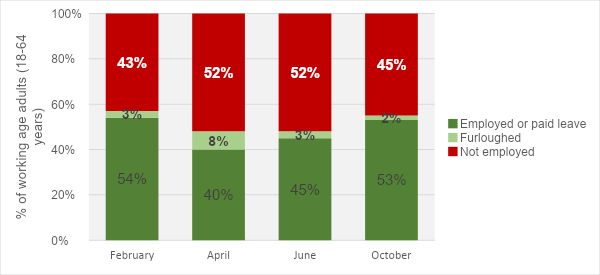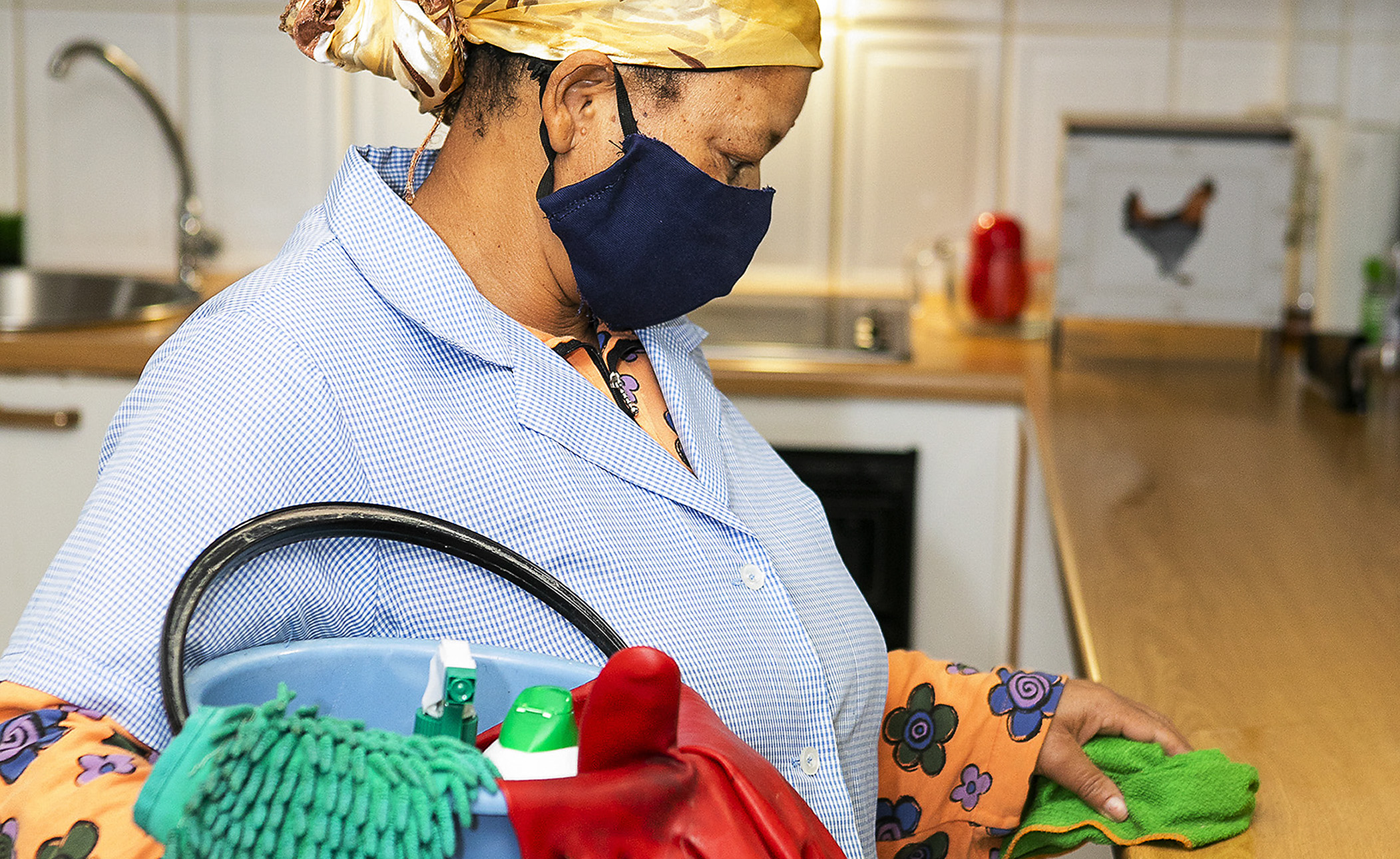Maverick Citizen: NIDS-CRAM Wave 3
Women take big hit as lockdown reshapes SA’s jobs market, survey finds

Extraordinary findings released on Wednesday about the South African economy show just how great the impact of the Covid-19 lockdowns has been, and tell the story of a country in profound transition.
Researchers, in three papers analysing the findings of the latest NIDS-CRAM survey, highlight important employment recoveries and adjustments in the South African labour market by October 2020. Their reports, drawing on the Wave 3 data and released on Wednesday, are freely available to the public.
Between February and April 2020 we had previously found a substantial increase in those who were not employed (43% to 52%) and an increase in furloughed workers (employed with partial or no pay). We now find that by October 2020 the percentage of people employed is much closer to its February, pre-pandemic level.
The fraction of people employed (including furloughed workers) changed from 57% (February) to 48% (April and June) to 55% in October.

These results are robust to a number of data checks. The employment recovery described here remains broadly the same after testing a number of alternative approaches to measuring employment, including using different definitions of employment that take account of different age categories or what counts as “employment” (using full-time equivalent work based on days worked in the week rather than the count of the employed).
Similarly, the results are unchanged after using a number of different weighting schemes. All NIDS-CRAM authors analysing the employment data find the same broad trends.
Notwithstanding these trends, the South African labour market looks very different in October 2020 compared with before lockdown (February). Of those who lost their jobs in April, only about half were employed again by October, while about a third of those without employment in February were employed in October. There were also occupational and industrial sector-level changes accompanying the employment changes, though it is too early to tell if these changes are temporary or a more permanent feature of the South African economy.
The employment recovery was positively correlated with educational attainment among prime-age adults and young people.
On the other hand, April job loss was more likely to be persistent for young relative to older groups. Employment history correlated strongly with 2020 employment outcomes: individuals with a more extensive history of employment were more likely to remain stably employed, or, among the non-employed, to find work.
Further disaggregating the data by gender provides insight into the different experiences of men and women over this period. In waves 1 and 2 of NIDS-CRAM it was found that women were particularly hard hit by the initial lockdown phases and school closures, in terms of labour market outcomes and childcare responsibilities.

Given how much larger the fall in women’s employment was as a result of the initial shock to the labour market, it appears women still remained behind men in terms of reaching their pre-Covid employment levels in October. (Photo: Gallo Images/Jacques Stander)
With the move from Level 3 lockdown in June to the much less restrictive Level 1 in October, the recovery in employment was shared almost equally between men and women. However, given how much larger the fall in women’s employment was as a result of the initial shock to the labour market, it appears women still remained behind men in terms of reaching their pre-Covid employment levels in October.
These extraordinary findings about the South African economy show just how great the impact of the Covid-19 lockdowns has been, and tell the story of a country in profound transition.
However, South Africa is not unique in its experience. A number of comparable countries have experienced similar types of uneven recoveries in employment, including Brazil, Colombia, Ghana, India, Mexico and Uruguay. NIDS-CRAM Wave 4 data, which will be released in April/May 2021, will continue to tell the unfolding story of this remarkable period in our country’s history.
We remind readers that caution should be exercised in generalising NIDS-CRAM results to the population. The NIDS-CRAM 2020/21 data are drawn from a sample based on NIDS 2017, which had a higher employment rate to start with (55% in 2017) compared with StatsSA’s QLFS 2017 (48%) (see Ranchhod & Daniels, 2021). The imminent release of StatsSA’s QLFS 2020 Q4 results will help verify the extent of the considerable changes seen in NIDS-CRAM Wave 3. DM/MC
Reza C Daniels, Associate Professor, University of Cape Town: [email protected]
The papers looking at employment dynamics in the latest NIDS-CRAM survey are:
- Bassier, I., Budlender, J. & Zizzamia, R. (2021) The labour market impacts of COVID-19 in South Africa: An update with NIDS-CRAM Wave 3;
- Casale, D. & Sheperd, D. (2021) The gendered effects of the Covid-19 crisis and ongoing lockdown in South Africa: Evidence from NIDS-CRAM Waves 1-3;
- Espi, G., Ranchhod, V. & Leibbrandt, M. (2021) Age, employment history and the heterogeneity of Covid era employment outcomes.
Information pertaining to Covid-19, vaccines, how to control the spread of the virus and potential treatments is ever-changing. Under the South African Disaster Management Act Regulation 11(5)(c), it is prohibited to publish information through any medium with the intention to deceive people on government measures to address Covid-19. We are, therefore, disabling the comment section on this article in order to protect both the commenting member and ourselves from potential liability. Should you have additional information we should know about, please email [email protected]
"Information pertaining to Covid-19, vaccines, how to control the spread of the virus and potential treatments is ever-changing. Under the South African Disaster Management Act Regulation 11(5)(c) it is prohibited to publish information through any medium with the intention to deceive people on government measures to address COVID-19. We are therefore disabling the comment section on this article in order to protect both the commenting member and ourselves from potential liability. Should you have additional information that you think we should know, please email [email protected]"





 Become an Insider
Become an Insider